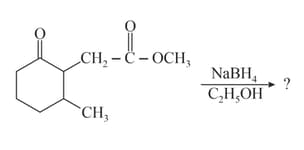Embibe Experts Solutions for Chapter: Alcohols, Phenols and Ethers, Exercise 1: AIPMT - 25th July 2015
Embibe Experts Chemistry Solutions for Exercise - Embibe Experts Solutions for Chapter: Alcohols, Phenols and Ethers, Exercise 1: AIPMT - 25th July 2015
Attempt the free practice questions on Chapter 24: Alcohols, Phenols and Ethers, Exercise 1: AIPMT - 25th July 2015 with hints and solutions to strengthen your understanding. EMBIBE CHAPTER WISE PREVIOUS YEAR PAPERS FOR CHEMISTRY solutions are prepared by Experienced Embibe Experts.
Questions from Embibe Experts Solutions for Chapter: Alcohols, Phenols and Ethers, Exercise 1: AIPMT - 25th July 2015 with Hints & Solutions
Given below are two statements:
Statement I: In Lucas test, primary, secondary and tertiary alcohols are distinguished on the basis of their reactivity with conc. , known as Lucas Reagent.
Statement II: Primary alcohols are most reactive and immediately produce turbidity at room temperature on reaction with Lucas Reagent.
In the light of the above statements, choose the most appropriate answer from the options given below:
The product formed in the following chemical reaction is:

Which of the following substituted phenols is the strongest acid?
Anisole on cleavage with gives
The structure of intermediate A in the following reaction, is:

The compound on treatment with gives , and with gives . react together to give diethyl ether. are in the order
Among the following sets of reactions, which one produces anisole?
Which of the following will not be soluble in sodium hydrogen carbonate?
